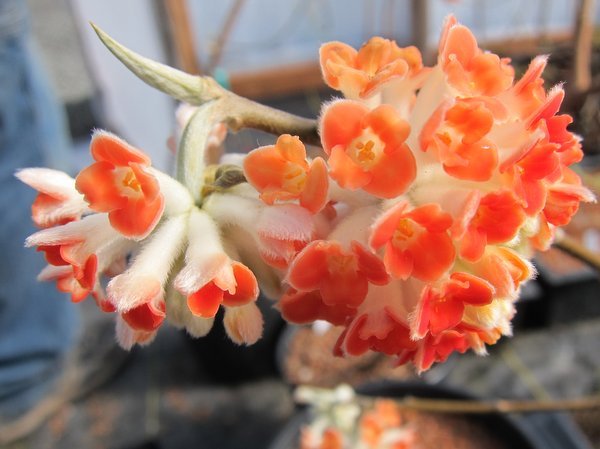Divine-smelling flowers helping to brave the winter frosts

It seems so vulnerable to bloom in these darkest of days, with the thinnest of sun rays to warm your nectar, and to do so naked, without the shelter of leaves, too: all that energy needed to flower, and borne on just a few bare twigs. There are not many plants that do, but those that choose to bear their flowers in the depth of winter are to be prized.
If you’re going to brave winter frosts and flower, shelter (as well as the promise of winter sun) is needed. In many smaller gardens, the ideal spot is against the house, where plants will benefit from the wall’s warmth (in summer, they will offer a pleasing green foil).
There’s Edgworthia chrysantha, with its pom-pom like clusters of tiny, yellow flowers that seduce both you and the bees with their heady scent. The unopened flower buds are covered in white hairs, making them appear dusted by frost, but with a little sun, they soon open their perfumed doors for pollination. It’s a common trick, in winter, for very early spring flowers to put all their energy into perfume, so that those brave, winter-flying bumbles and solitary bees will come. E. chrysantha needs good, fertile soil with the addition of leaf mould and well-rotted compost every autumn.
Another divine-smelling creature is wintersweet, Chimonanthus praecox, which crowns its naked stems in tiny, translucent, waxy, sulphur-yellow flowers that are stained purple inside. Their scent is heady, sweet and distinctly spicy. They are notoriously slow to bloom, taking several years to settle in, but the rewards are everything. Take a few branches indoors and let the warmth of your home be enveloped in their deliciousness. They can be loosely fan-trained against a wall; though if it’s a sunny summer, make sure their feet are kept damp with a thick layer of mulch.
Stachyurus praecox is often overlooked, because it fails to produce any notable scent, but what it lacks in fragrance, it makes up for in flower. From a distance, these appear to be catkins, but up close, the stiff, pendant flower spikes are covered in creamy, white bells that contrast with the red growth of the new stems. By spring, the whole majesty starts to vanish into the background as its leaves unfurl; if you need a little more show, there’s a variegated form, ‘Magpie’, with creamy white margins that are tinged pink.
Stachyurus can easily be trained into a fan shape to grow on a wall. It’s also very happy in sheltered shade, making it a useful one for that gloomy side return by the back door.



































